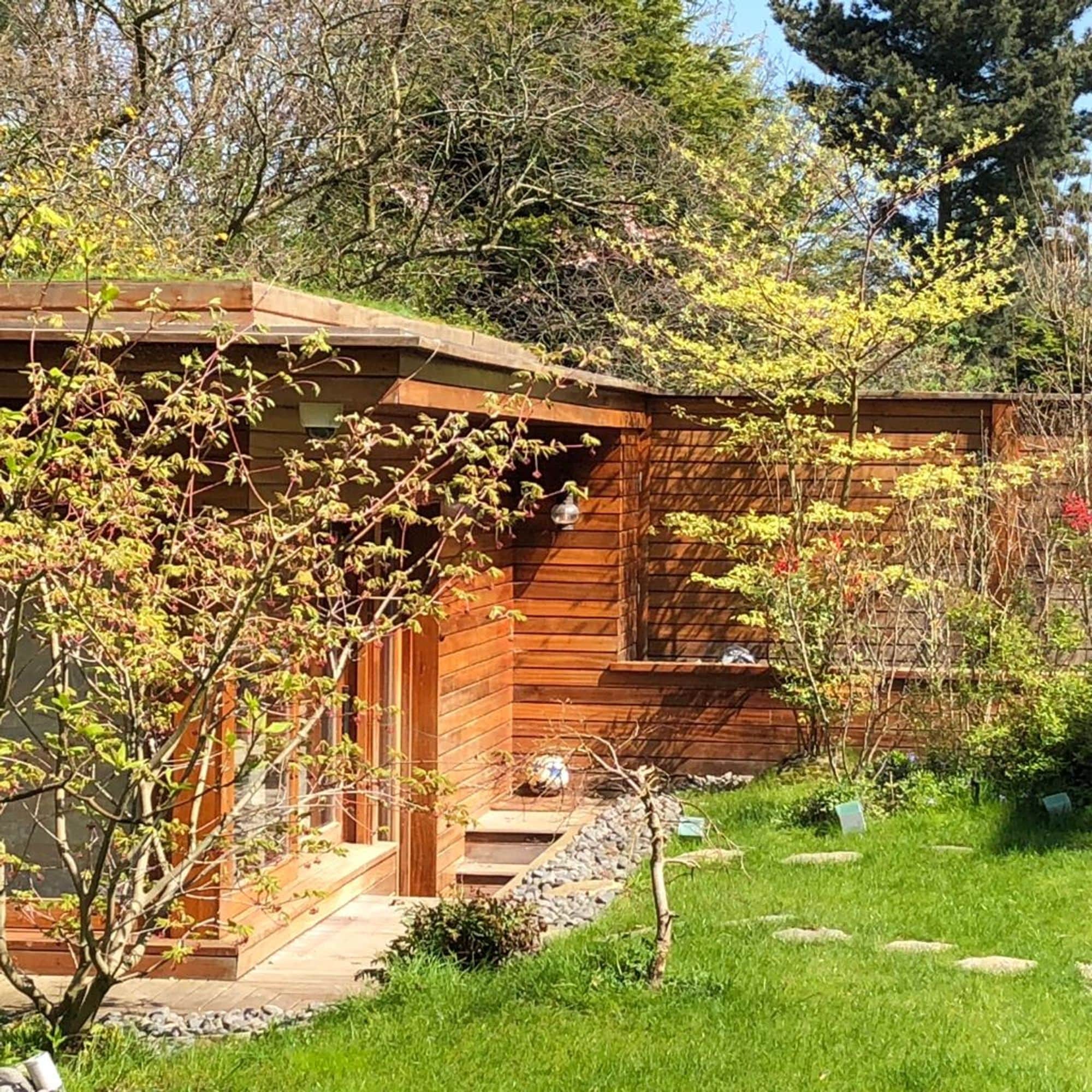
Discover The Benefits Of A Green Roof
As urban areas become more populated and built-up, green space is frequently being replaced with concrete buildings and roads. This leads to environmental issues like increased stormwater runoff, higher temperatures, air pollution, and loss of habitat. Incorporating green roofs into suburban and brown-field housing developments can help mitigate these problems by adding vegetation and permeable spaces above the built environment. Here are some of the main benefits of green roofs: .png?width=400&height=200&name=BOOK%20A%20CONSULTATION%20-%20DS%20Squared%20(1).png)
Stormwater Management
When rain falls onto a normal impervious tile roof surface, it quickly runs off into sewer systems, which can overwhelm drainage infrastructure and cause flooding – especially during periods of peak rainfall. With a green roof, however, the plants and growing medium soak up and retain up to 65% of rainfall, reducing pressure on the public sewer. Plant roots gradually absorb the water, or it evaporates over time rather than running off immediately, easing the burden on public waterways and reducing flooding.
Temperature Regulation
Green roofs can enhance a building's energy efficiency and help moderate internal temperatures. In summer, the soil and plants cool the air by absorbing heat from the sun, reducing the need for plug-in fans. In winter, the layers of soil and vegetation act as insulation to reduce heat loss through the roof. This results in lower energy usage for heating and cooling, saving money for the building owner.
Green roofs can also counter the urban ‘heat island’ effect, whereby cities are disproportionately hotter than surrounding rural areas due to expansive heat-absorbing surfaces. By cooling roof temperatures by 30-40%, green roofs decrease the heat radiated into the city by up to 72%.
Long Lifespan
A green roof protects the waterproofing membrane below from the sun, temperature swings, and storms. The plants buffer against daily high and low temps and UV radiation, extending the roof's life expectancy to 40 years or more.
Wildlife Habitat
Turning hard grey rooftops green creates welcoming habitats for birds, bees, butterflies, and other urban wildlife. Even small or high-rise green roofs can serve as stepping stones of food and shelter for migrating species. They increase biodiversity by connecting isolated parks and waterways with additional green space. Some green roofs even feature integrated beehives to support pollinators.
Noise Reduction
The layers of soil and plants on a green roof provide excellent sound insulation and noise absorption for building occupants and their neighbours. Green roofs have been shown to reduce exterior noise by 40 decibels or more, depending on the type of roof, helping create a peaceful sanctuary above the bustling city streets.
Cleaner Air
All the new foliage on green roofs naturally filters air pollutants and fine particulates. The plants absorb carbon dioxide and release oxygen through photosynthesis. Green roofs can offset your carbon footprint improving air quality in urban areas.
Types Of Green Roofs
There are three main types of green roof systems:
- Extensive green roofs have a shallow 4-7-inch substrate layer. They are low maintenance and lower cost but don't allow for much plant diversity beyond hardy succulents and wildflowers.
- Semi-intensive green roofs have a moderate substrate depth of 6-10 inches. This supports more diverse vegetation like grasses, shrubs, and small trees, but they require some irrigation and regular maintenance.
- Intensive green roofs have over 8 inches of substrate and can support any type of planting, allowing for constructed green spaces and rooftop gardens, but at the expense of extensive ongoing structural support and maintenance.
Turn Your Grey Roof Green To Reap The Benefits
The environmental and social benefits provided by green roofs make them a valuable investment in sustainability for buildings and cities alike. As more homeowners and property developers realise their many advantages, green rooftops will continue spreading across urban and suburban areas to help create greener, healthier, and more liveable spaces for people and wildlife.
Next Steps
For information about how to incorporate green roofing and other ecological features into residential new builds at the design stage, please contact DS Squared Architects today by clicking here.
.png)

